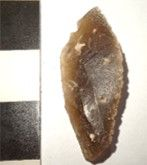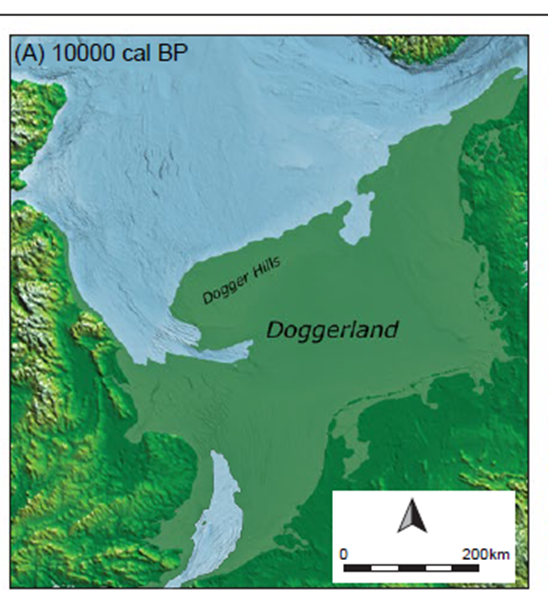Archaeologists are beginning to uncover the secrets of this lost prehistoric land. which is currently at the bottom of the North Sea
Scientists recently brought to the surface 100 flint artefacts made by Neanderthals between 15,000 and 8,000 years ago. using a special digging machine
Artifacts include a number of small flint cutting tools. Including dozens of flint flakes from toolmaking activities. It has been recovered from the seabed in three different locations on the southern coast of the prehistoric sunken land.
Each newly discovered ancient site Some 20 meters below the storm surface of the North Sea, it sits next to the mouth of a long-lost river.
The site, 12 to 15 miles from the Norfolk coast, is expected to yield hundreds more artefacts. This will begin to reveal how the people of the Lost Lands lived.

Their economy is believed to revolve around hunting red deer, wild boar, and shellfish harvesting. Parts of the North Sea floor are of great archaeological importance. It has been untouched by humans since the Flood 10,000 to 7,500 years ago.
On land, the Neolithic, Bronze, Iron Age, Roman, medieval and modern settlements, roads, forestry activities, and agriculture have destroyed vast amounts of early human archeology.
In the UK, 99 percent of the period of human occupation predates the Neolithic period and later settlement and agriculture. That 99 percent is partially wiped out by 1 percent of prehistory and more recent human history.
But at the bottom of the North Sea The impact of post-Neolithic humans was greatly reduced. And as a result, some Stone Age hunter-gatherer “landscapes” have survived largely intact on the sea floor.
“Our investigations at the bottom of the North Sea have the potential to change our understanding of Stone Age cultures in and around the North Sea. the area that is now England and the continent near it,” said Professor Vince Gaffney, who leads archaeological investigations into the North Sea at the University of Bradford's Center for Underwater Landscapes.

This prehistoric treasure chest hides a sad story and a warning. In just 1,500 years (about 8,000 BC to 6,500 BC), an area nearly the size of the United Kingdom was lost to the sea as a result of rising sea levels caused by global warming. severe
In the period 8,000 BC. About 80,000 square miles of the southern part of the North Sea today is dry land, but by 6500 BC. Only about 5,000 square miles remain.
During that time An average of 50 square miles is lost every year. Sometimes it can be much more than that. When the sea level rises Stone Age populations lived primarily along the coast and at altitudes closer to sea level. There is also a greater risk of seasonal flooding.
Because the hunting grounds were lost to the sea. Generations of area residents Therefore, they had to be driven out of their original land.
Future archaeological work is likely to shed light on how this story unfolds. However, what happened to Britain's lost prehistoric North Sea world is a stark reminder for 21st century humans that global conditions How will modern warming affect many coastal and lowland communities around the world in the decades and centuries to come?
The ongoing archaeological investigation into the North Sea is a joint operation carried out by the University of Bradford and Belgium's Flemish Maritime Institute. The survey is being carried out in conjunction with the North Sea Wind Farm Project and Historic England's Marine Planning Department.
The sinking of large amounts of Stone Age land by post-Ice Age sea-level rise was a major event in British prehistory. and the status of the United Kingdom as an island since that time. Scientists involved in the research believe that In addition to helping us understand the past Their work can also act as a warning to the future.
“When we delve into the past We are beginning to understand more about what future sea level rise will mean to humanity. Our partnership with the North Sea wind farm community is part of the UK's effort to reach net zero. and to combat global warming,” Professor Gaffney said.





